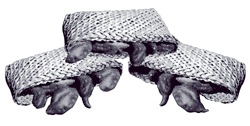The assessments
included thirty-five tasks investigating students’ understandings,
processes and skills in the area of mathematics called number. Number
includes the ways numbers are represented, their value,
 |
 |
|
operations
on number, accuracy and efficiency in calculating, estimating and
making approximations.
Twelve tasks were identical for both year 4 and year 8. Thirteen tasks
had overlapping versions for year 4 and year 8 students, with some
parts common to both levels. Seven tasks were attempted by year 8 students
only, and three by year 4 only. Eight are trend tasks (fully described
with data for both 1997 and 2001), fifteen are released tasks (fully
described with data for 2001 only), and twelve are link tasks (to be
used again in 2005, so only partially described here).
The tasks are presented in the three sections: trend tasks, then released
tasks and finally link tasks. Within each section, tasks attempted
(in whole or part) by both year 4 and year 8 students are presented
first, then tasks where year 4 and year 8 students did parallel tasks,
followed by tasks attempted only by year 8 students.
Averaged across 229 task components administered to both year 4 and
year 8 students, 25 percent more year 8 than year 4 students succeeded
with these components. Year 8 students performed better on every component.
As expected, the differences were generally larger on more difficult
tasks — often tasks that many year 4 students would not yet have
had much opportunity to learn in school.
There was evidence of modest improvement between 1997 and 2001, especially
for year 4 students. Averaged across 59 trend task components attempted
by year 4 students in both years, 5 percent more students succeeded
in 2001 than in 1997. Gains occurred on 51 of the 59 components. At
year 8 level, with 106 trend task components included, 3 percent more
students succeeded in 2001 than in 1997. Gains occurred on 85 of the
106 components.
Students at both levels scored poorly in tasks involving estimation
and tasks involving fractions (especially fractions other than halves
and quarters). Asked to work on computations such as 36 + 29 or 9 x
98, few students at both levels chose the simplification of adjusting
one of the numbers to a more easily handled adjacent number (making
the 29 into 30, or the 98 into 100). Most relied instead on the standard
algorithms for these tasks, indicating a lack of deep understanding
of number operations. The following percentages of year 8 students
got ninety percent or more of tested basic facts correct: 99 percent
for addition, 95 percent for subtraction, 86 percent for multiplication,
and 65 percent for division. For year 4 students, the corresponding
percentages were 84 percent, 53 percent, 26 percent, and 11 percent.
|
